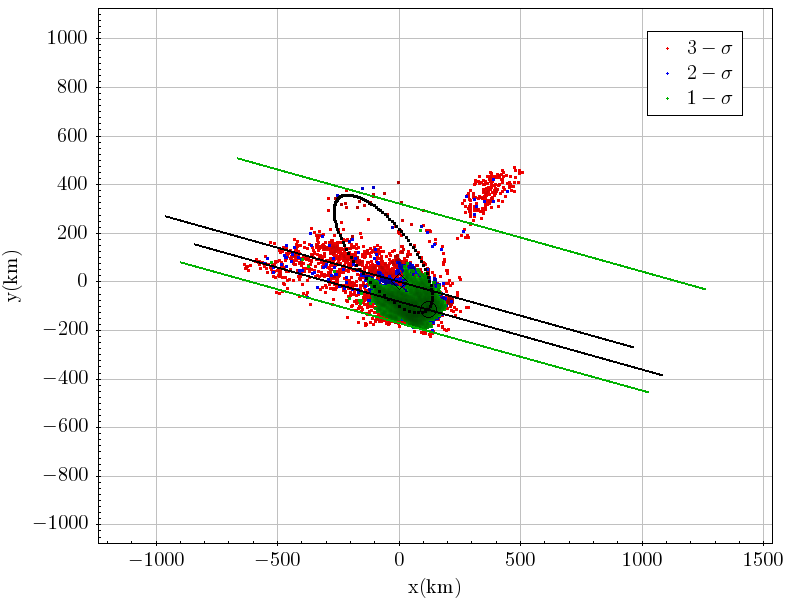We use all orbits from 1,2 and 3 sigma issued from Genetical algorithm, and we see where the satellite
is for the occultation date. North on top, and East on right.
-
Center at coordinates 0,0 is Primary
-
Black dots show the orbit with the best solution at the date of occultation
-
Green zone show orbits covering 1-sigma error
-
Blue zone for 2-sigma
-
Red zone for 3-sigma
Alexhelios
 This figure represent 2120974 orbits computed to the occultation date.
Each orbit is classify throw its performance, given an accuracy in kilometer :
This figure represent 2120974 orbits computed to the occultation date.
Each orbit is classify throw its performance, given an accuracy in kilometer :
- 1-σ error = 890 km
- 2-σ error = 891 km
- 3-σ error = 982 km
Cleoselene
 This figure represent 6264523 orbits computed to the occultation date.
Each orbit is classify throw its performance, given an accuracy in kilometer :
This figure represent 6264523 orbits computed to the occultation date.
Each orbit is classify throw its performance, given an accuracy in kilometer :
- 1-σ error = 472 km
- 2-σ error = 674 km
- 3-σ error = 791 km